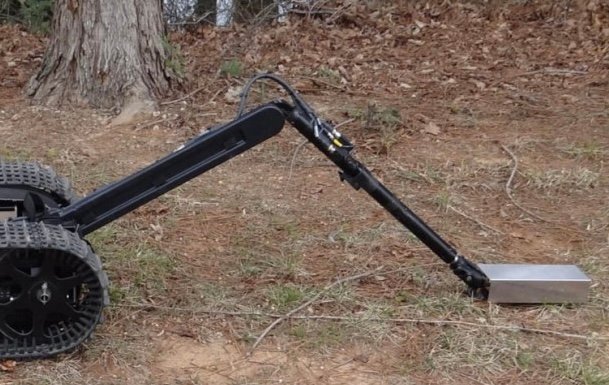NATO’s Land Mine Detectors: A Comprehensive Guide
Land mines are explosive devices buried in the ground that pose a significant threat to civilian populations and military forces around the world. These hidden weapons can cause severe injuries or even death, making them a serious problem in many conflict-affected regions. The North Atlantic Treaty Organization (NATO) plays a crucial role in land mine detection, aiming to ensure the safe removal of these dangerous devices. In this comprehensive guide, we will explore the work carried out by NATO in land mine detection, the various types of detectors used, key features to consider, the challenges faced, success stories, and the future of land mine detection technology.

What are Land Mines and Why are They a Problem?
Land mines are explosive devices that are placed under the ground or on its surface to cause harm to individuals or vehicles passing over them. They are typically triggered by pressure, a tripwire, or even remote control. Land mines are a problem because they remain active for years or even decades after conflicts end. Their hidden nature poses an ongoing risk to civilians, inhibits the use of land for agriculture or development, and hampers post-conflict reconstruction efforts.
The Role of NATO in Land Mine Detection
NATO takes an active role in land mine detection to ensure the safety of both military personnel and civilians. The organization aims to support affected countries by providing technical expertise, assistance, and resources to help identify and neutralize land mines. NATO actively collaborates with governments, international organizations, and non-governmental organizations (NGOs) to promote mine action programs worldwide.
How do NATO Land Mine Detectors Work?
NATO land mine detectors employ various technologies to detect the presence of these hidden explosives. One common method is through the use of metal detectors, which work by detecting the metallic components of land mines. Ground-penetrating radar is another technique used, which sends electromagnetic pulses into the ground to create an image of objects buried below. Additionally, sniffer dogs specially trained to detect the scent of explosives are often employed alongside these detectors.
Types of Land Mine Detectors Used by NATO
NATO utilizes a range of land mine detectors, each with its own specific capabilities. Metal detectors, as mentioned earlier, are commonly used due to their ability to detect the metallic components of land mines. Ground-penetrating radar is also widely employed, as it can identify buried objects and determine their size and depth. Another type of detector used is the chemical detector, which helps identify the presence of explosive materials. In addition, specialized mechanical devices such as flails and tillers are used to clear large areas of land rapidly.
Key Features to Look for in NATO Land Mine Detectors
When choosing a land mine detector, there are several key features to consider. Firstly, the detector should be highly sensitive to ensure the detection of even small explosive devices. It should also possess good discrimination capabilities to differentiate between land mines and harmless metallic objects. The detector’s durability is crucial, as it must withstand harsh and challenging operating conditions. Lastly, ease of use and portability are essential factors, as detectors need to be carried to different locations for effective detection.
Training and Certification for NATO Land Mine Detectors
To operate NATO land mine detectors effectively, personnel need to undergo comprehensive training and obtain certification. NATO offers training programs that cover the operation, maintenance, and safety procedures associated with land mine detectors. These programs also provide knowledge on understanding and interpreting the detector’s readings, as well as the correct approach to identifying and neutralizing land mines. Certification ensures that personnel are competent and capable of performing their duties safely and effectively.
Challenges in Land Mine Detection for NATO
Land mine detection presents numerous challenges for NATO and other organizations involved in mine action. The vast number of land mines worldwide, often in remote and inaccessible areas, makes detection a time-consuming and labor-intensive process. Environmental factors such as soil composition and terrain can also affect detection accuracy. Additionally, the presence of unexploded ordnance and booby traps further complicates the task. These challenges require ongoing research and development to enhance detection capabilities.
Success Stories: NATO’s Land Mine Detection Efforts
NATO’s land mine detection efforts have yielded remarkable successes. For instance, in Bosnia and Herzegovina, NATO assistance helped clear over 36,000 mines and destroy more than 200 tons of explosive material. In Afghanistan, NATO-led forces cleared over 140,000 mines, while in Croatia, they assisted in clearing almost 900,000 mines. These success stories demonstrate NATO’s commitment to making affected areas safer and restoring normalcy in post-conflict regions.
The Future of Land Mine Detection Technology
The future of land mine detection technology holds promise for more efficient and safer processes. Advancements in artificial intelligence, robotics, and drone technology are being explored to improve the detection and removal of land mines. Research efforts are focused on developing detectors that can pinpoint the exact location of land mines and differentiate them from harmless objects more accurately. The integration of these technologies will significantly enhance the speed, precision, and safety of land mine detection operations.
NATO’s Ongoing Efforts to Clear Land Mines===
NATO remains committed to its ongoing efforts in land mine detection and clearance. The organization continues to work closely with affected countries, NGOs, and international partners to support mine action programs. By utilizing advanced detection technologies, providing training and certification, and sharing expertise, NATO strives to create a safer world by eliminating the threat of land mines. With the commitment and collaboration of various stakeholders, the day when land mines are no longer a danger may not be far away.
